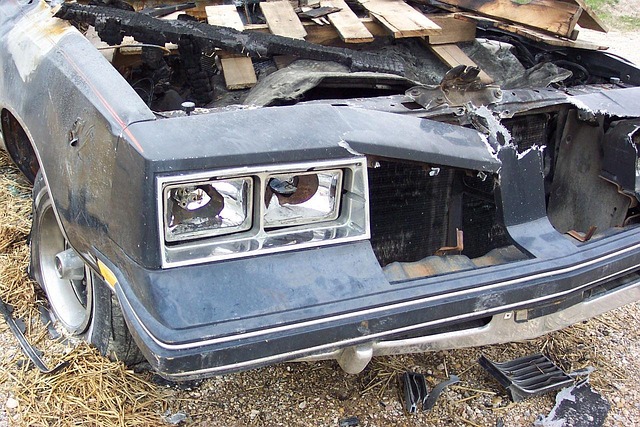Electronic diagnostics are revolutionizing post-collision vehicle repair by enhancing safety systems and ensuring optimal performance. Advanced sensors, cameras, and processors in modern vehicles detect hazards in real-time, triggering safety measures like automatic braking and lane departure warnings to prevent or mitigate accidents. These diagnostics provide critical data for auto repair shops to fix issues with airbags, seatbelts, anti-lock brakes, and other safety features, such as dent repairs and car paint jobs, thereby improving vehicle integrity and road safety.
Electronic diagnostics have revolutionized vehicle safety systems, becoming an indispensable backbone for modern cars. By seamlessly integrating sensors, software, and communication networks, these advanced tools enable real-time data analysis crucial for collision avoidance. This article delves into the multifaceted role of electronics in enhancing safety features, exploring how they detect threats, initiate mitigation strategies, and facilitate restoration post-collision. Understanding electronic diagnostics is key to appreciating the complex web of safety mechanisms designed to protect drivers and passengers.
- Understanding Electronic Diagnostics: The Backbone of Modern Vehicle Safety
- Unveiling the Role of Electronics in Collision Avoidance Systems
- Restoring Safety: The Impact and Process of Electronic Diagnostics in Post-Collision Vehicles
Understanding Electronic Diagnostics: The Backbone of Modern Vehicle Safety

In today’s digital era, electronic diagnostics have become the backbone of modern vehicle safety systems. These advanced technologies play a pivotal role in enhancing the overall security and performance of automobiles. By integrating sophisticated sensors, processors, and communication modules, vehicles can now detect and analyze potential hazards more accurately than ever before. This real-time data exchange enables swift responses during critical situations, such as collisions, significantly reducing the risk of severe injuries or fatalities.
Understanding electronic diagnostics is crucial when considering the intricate web of safety features they facilitate. From airbag deployment systems to anti-lock braking mechanisms and advanced driver assistance systems (ADAS), these diagnostic tools are instrumental in restoring vehicle safety. They not only aid in identifying faulty components but also provide precise guidance for auto detailing, auto dent repair, and car damage repair, ensuring that every aspect of the vehicle functions optimally after a collision or other incidents.
Unveiling the Role of Electronics in Collision Avoidance Systems

The integration of electronics has revolutionized collision avoidance systems in modern vehicles, making them smarter and more responsive than ever before. These systems, powered by intricate networks of sensors, cameras, and processors, play a pivotal role in enhancing road safety. By continuously monitoring the surroundings, they can detect potential hazards, such as other cars, pedestrians, or obstacles, even at high speeds. This early detection triggers various safety measures, like automatic braking, lane departure warnings, and adaptive cruise control, which help prevent or mitigate collisions.
Electronic diagnostics further reinforce these systems’ effectiveness by providing precise data and real-time performance analysis. Technicians can use diagnostic tools to uncover potential issues, ensuring optimal functioning of sensors and actuators. Regular maintenance and repairs, like those for car scratch repair or car paint repair, are made easier with this technology, as it pinpoints problem areas in the collision avoidance system, often within an automotive body shop. This proactive approach not only maintains safety standards but also contributes to efficient vehicle servicing.
Restoring Safety: The Impact and Process of Electronic Diagnostics in Post-Collision Vehicles

Restoring Safety: The Power of Electronic Diagnostics in Post-Collision Vehicles
In the aftermath of a collision, vehicles undergo significant structural and system damage, requiring meticulous repair and restoration. This is where electronic diagnostics play a pivotal role, offering advanced capabilities to assess and rectify safety systems. By employing sophisticated technology, collision repair shops can accurately identify and address issues within the vehicle’s electronics, ensuring the safety and reliability of its operational components.
The process involves scanning and analyzing data from various sensors and control modules, providing detailed insights into the condition of safety-critical systems like airbags, seatbelts, and anti-lock braking mechanisms. This information guides auto body work professionals in their efforts to not just fix visible damage but also restore the integrity of electronic safety features, ultimately contributing to a safer driving experience.
Electronic diagnostics play a pivotal role in enhancing vehicle safety, especially in collision avoidance systems. By meticulously analyzing data from sensors and control units, these diagnostics enable swift restoration of safety systems after collisions. This process not only improves the overall safety of vehicles but also ensures that they return to their optimal operating conditions, making roads safer for everyone. In the context of electronic diagnostics collision response, the impact is clear: damaged systems are identified, repaired, or replaced, and vehicle performance is restored to its highest standards.














